Contribute to the BathNats Lockdown Log
While field trips are suspended do share any sightings of interest within the BathNats area. Use the contact form and if you have any photos to share ask on the form for a direct email link to submit them. Above is a common buzzard over Box, by David Hall. And don’t miss our lockdown log for March to May, June, July, August & September
Lucy Starling reports: I enjoyed a short walk around the Colerne “plateau” with fellow naturalist Lis Allen on October 13. From the start, lots of calling Skylark, Meadow Pipits, Pied Wagtails and a male Stonechat which we located in and around a ploughed field opposite the airfield.
As we walked along a path through trees alongside the field, I heard a quite high-pitched piping call a few times which I believe could have been Golden Plover. Lots of Robin song along the route and a few Chaffinches and just one Chiffchaff heard calling. I was surprised not to see a Red Kite, and no Ravens or Buzzards that are such a common sight now around Bath.
Countryside looking lovely in the autumn sunshine and lots of berries around for the Redwing to eat in due course. At the end of the walk back at the ploughed field off Doncombe Lane, a number of Common Gull had appeared – this species comes to us in late autumn and winter and often can be found in fields on high ground such as Claverton or Lansdown.

Autumn sunshine on the Colerne plateau © Lis Allen

The Colerne plateau © Lis Allen
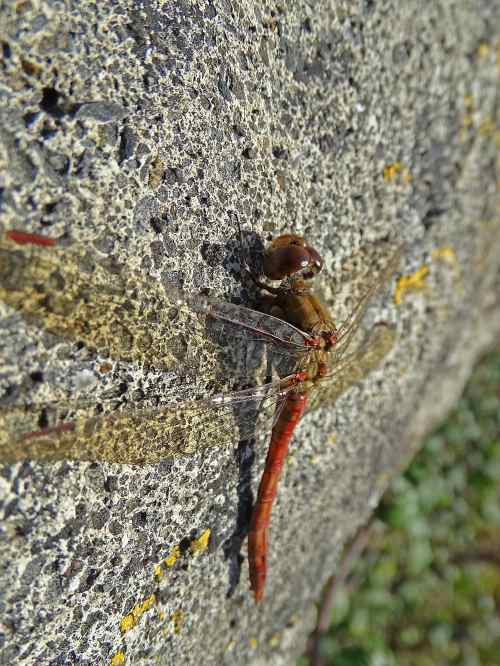
Common Darter © John Garrett
Lucy Starling writes: Riverside circular walk with Joh Garrett from Bathwick to Batheaston and on to Bathampton returning via the canal towpath on morning of 6 November did not produce many birds, but, to our surprise, we found two species of dragonfly. This Common Darter was on the wall above the river at Batheaston and we saw a Southern Hawker among river-side vegetation as we walked around Bathampton Farm field.
A few Redwing in the hawthorns and one Meadow Pipit. J and I then parted company along the towpath heading home, and within a few minutes, I noted an insect flying low over nettles and grass close to the brambles and it was a Speckled Wood butterfly – was not expecting that! The flight season for these insect species generally ends in October but a sighting in November is not impossible, as I proved on 6 November.
I had remarked to JG that it would be great to find a Stonechat in the area in winter. Next day, 7th, in the afternoon, I returned to the Bathampton Farm field and in the brambles close to the railway line, I heard the distinctive calls of Stonechat and looked over and there were 2 pairs! On 7th, I also added Fieldfare (flying over Powlett Road calling at 8.55am) to my Lockdown species list (birds seen from home on foot) on the same day.
Male Kingfisher was active and noisy along the canal between Bathampton and Beckford Road and there were circa 30 Redwing.
I added Common Gull to my Lockdown list on 1 November; a flock of 30 in a field in Claverton seen from the towpath. What next I wonder?
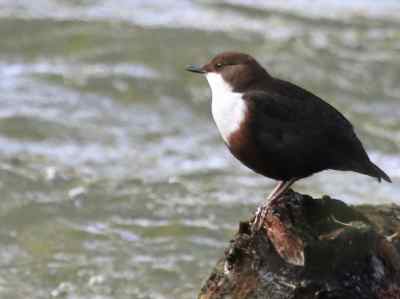
Dipper on By Brook © David Hall
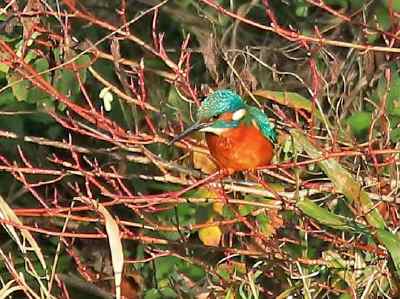
Kingfisher on By Brook © David Hall
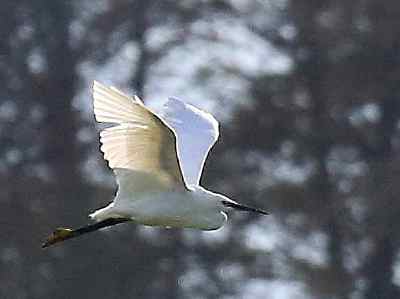
Little Egret over By Brook © David Hall
On 3 November Alice and John Nissen and Barbara and David Hall walked up and down the By Brook valley from Box in glorious sunshine just ahead of the scheduled lockdown.
The ground was sodden, but several bird species typical of the valley were showing: dipper, kingfisher, dabchick and little egret, and common buzzard were noisy overhead.
Alice Nissen reports from 11 November: Walking around the periphery of the Lansdown Race Course and the (golfer-free) golf course, Lucy Starling, John and I were lucky to witness big flocks of migrating birds.
Throughout the morning several hundred Skylarks in large groups swooped around the hill top and over the slopes to the west and north, probably refuelling before flying onwards.
Most spectacularly, at the view point (GR: Explorer 155, 713683) over 10 minutes we watched 500+ Redwings flying over the col between us and Kelston Roundhill as well as over our heads, followed by well over 100 Fieldfares. Both species looked dark against the bright sky (Bristol was bathed in sunshine) but were calling unmistakably. They were all streaming southwards.
John then spotted a dozen Golden Plover flying at speed, WSW, quite low in neat ‘V’ formation. Later, Common Gulls were puddling their feet on the short golf course grass and lots more were in groups in the fields along Lansdown Road.
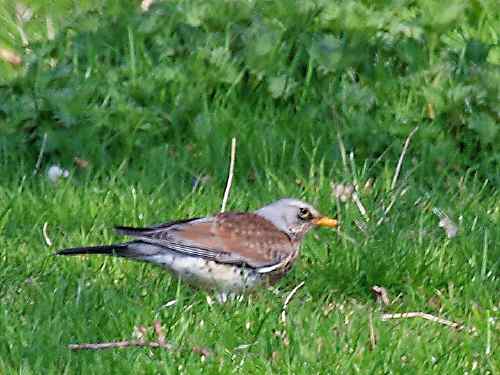
Fieldfare © David Hall
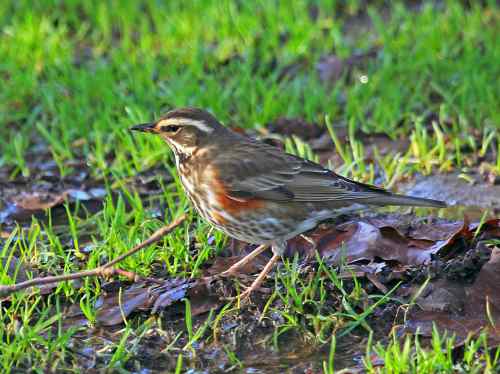
Redwing, Bath Jan 2014 ©David Hall
Lucy Starling reports: On 10 November I did an extension to both my riverside/canal-side walk and Bathampton Down circular, including descending Claverton Hill to Claverton village and walking across the A36 to Ferry Lane and down to Warleigh Weir and back along the towpath to Bathwick. Only one short, steep, and muddy uphill climb to Sham Castle. Here Bullfinch and Song Thrush were singing. Green Woodpecker showed on the golf course (no golfers so I was roaming off the footpath).
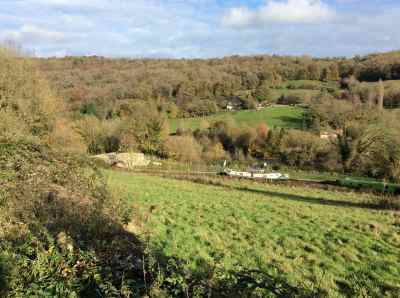
Walk around Claverton © Lucy Starling
There were three Meadow Pipits. Mistle Thrushes and a very noisy Nuthatch in Bushy Norwood and, at last, Redwings in beech trees up from the American Museum. Sitting in St Mary’s church yard where you can find Ralph Allen’s Mausoleum, we listened to Mistle Thrush “rattling” calls – this species could well start singing in December.
There were great views of male Kingfisher fishing at Warleigh Weir and two more Song Thrushes singing as we walked along the towpath to Bathampton and we heard three different calls of a Raven, perched up high in the top of a larch in Bathampton Woods. Common Gull flock in field with one Herring Gull for comparison. Super views of a Great Spotted Woodpecker near Hampton Row. I shall certainly be back to the Warleigh area to look for Siskin and Lesser Redpoll later in the winter.
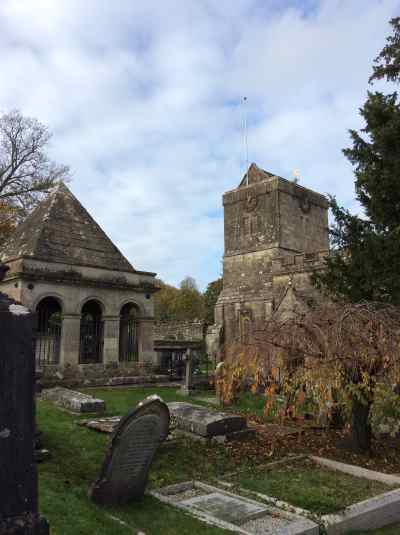
St Mary’s churchyard © Lucy Starling


Recent Comments